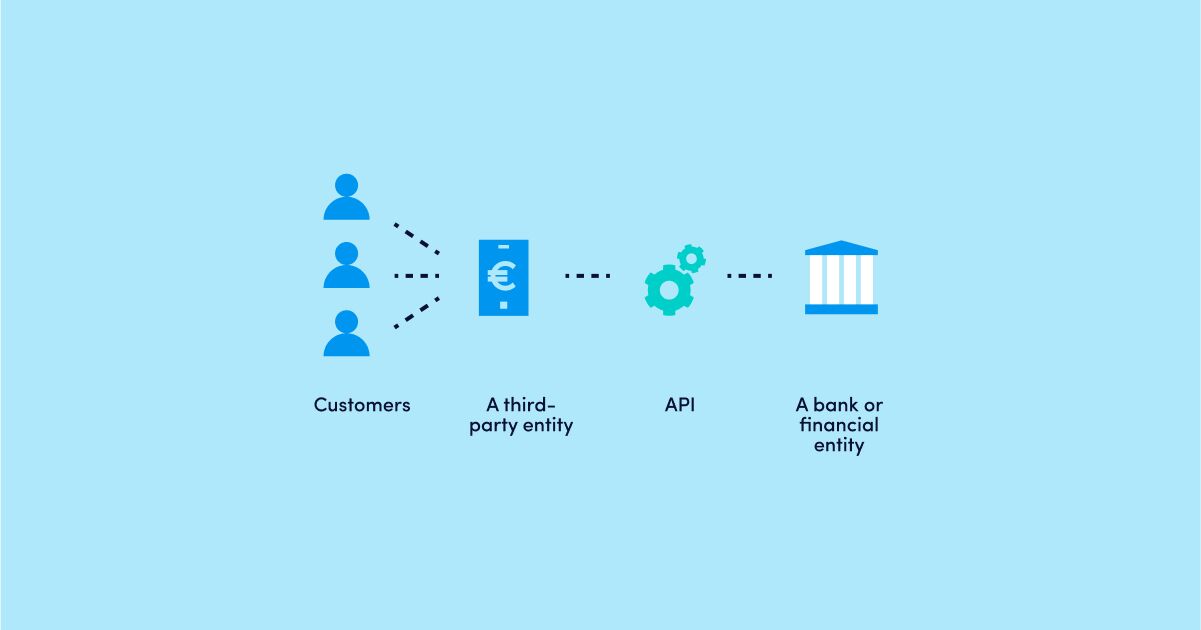Let’s examine the fintech trends that dominated the industry in 2022 and will continue dominating in 2023 and how they will shape the industry, businesses, and products.
Some statistics
According to the report “State of Fintech Global | Q3 2022” there was a drop in many fintech funding indicators, deals, and new unicorns. It shows the current state of play to be at pre-covid levels or even being similar to those seen back in 2018.
For example, Fintech funding in Q3’22 was $12.9B, which is a 64% year-on-year (YoY) drop and a 38% quarter-on-quarter (QoQ) drop – resulting in the lowest levels since Q4’20. Moreover, the number of $100M+ mega-round deals was only 19 – the fewest since Q2’18.
New unicorn births in Q3’22 were also down, as there were only 6 during this period – the lowest since Q2’20. Another example is Banking funding, which reached $1.2B in Q3’22 – the lowest since Q4’18 – representing an 86% decline from the record-high $8.3B seen in Q2’21.
These statistics reflect the true situation in the market and offer an indicator of what to expect next year. So, let’s discuss the biggest triggers of these fintech market changes in 2022 and the market trends expected to come to fruition in 2023.
Fintech trend #1: Investors are waiting for the situation to stabilise
The most obvious explanation of these statistics is that the economy has moved toward a recession, and investors are simply holding onto their capital and waiting for the situation to stabilise. Plummeting tech stock prices in early 2022 also made investors think twice about funding fintechs.
Of the startup companies that have become publicly listed since the beginning of 2020, many are being traded well below their IPO prices. Also, looking at the sector more generally, investors seem to be staying away from growth stocks at present.
Due to the ongoing volatility of the market and the decline in the valuation of fintech stocks, many company owners have become cautious about the idea of going public. As fintech stocks have continued to drop, certain investors have begun to demand that startups lower their IPO.
A good example of this is Chime, which has delayed its hotly-awaited IPO due to fintech stocks being 40% lower than they were in October of 2021. As yet, there’s no official word from Chime about the date of their IPO, the number of shares on offer or the price range.
Also, the ongoing war in Ukraine has unfortunately had a huge impact on the global fintech sector, with the instability causing investors to shy away from spending big.
Fintech trend #2: The market is stabilising & the boom of 2021 is over
Clearly the market is stabilising, and the boom of 2021 is well and truly over. In 2021 we saw a record increase in funding and the birth of new unicorns, but this boom was a reaction to the economy bouncing back after a covid-impacted 2020.
According to CB Insights, in 2021 investment in the global fintech industry was more than double than levels seen in 2020, with $132 billion being raised over the course of the year. Any boom, as a part of the growth/development cycle, is often a short-lived and caused by a specific situation in the market.
This is evidenced by the fact that the fintech market growth seen in 2021 – which was largely determined by world events – has returned to the previous level.
Fintech trend #3: The fintech market is full of different solutions & the number of new interesting fintech projects with a USP is gradually decreasing
Of course, there are still opportunities to invest; investment in emerging areas such as open finance and blockchain, crypto exchanges raising an abundance of capital, and investment by large firms into new technologies or covering special regions. However, these opportunities are much rarer and primarily focused on filling gaps for specific customer demands or markets.
Also, it’s worth mentioning that customer demand is not currently growing – due to finances, and instability of the economic/political situation, instability of crypto (for crypto products) in general, and because basic consumer needs are being met by existing offers.
Fintech trend #4: Regulations have become tougher
The continuing money influx into fintechs over the past year can partially be attributed to governmental and regulatory forces. Regulators in the UK and EU have promoted their countries as fintech hubs and created an environment that attracts funding and entices startups.
One example of such activity is the creation of sandboxes in which innovative fintech solutions can be tested. However, despite this openness of regulators to new fintech companies, the legislation and regulative basis has become tougher.
It’s certainly more difficult to obtain a Payment institution or E-Money institution license right now, as regulators have introduced new requirements for new startups with a view to controlling companies in the fintech sector more carefully.
Crypto markets are gradually moving towards becoming fully regulated. MiCA regulation representing the first-ever licensing regime for crypto wallets and exchanges to operate across the EU and imposing reserve requirements on stablecoins, will be a real game changer.
Also, against the backdrop of global crashes like FTX and the resulting turbulence in the crypto market, these kinds of regulation should be welcomed. Not only will it stabilise the market, but it will also make it more reliable and transparent.
Also, partnering with Baas-providers in order to connect to financial services is not as easy as it may seem. Baas-providers are very careful about the agents they work with and offer their services only to companies with a good client base and a clean reputation. Understandably so, as there is a high level of regulatory control in the industry and their licenses could be at risk.
Fintech trend #5: BaaS | fintech/banking with tech companies merging
BaaS is a continuing trend, but it’s also changing its “face” and it’s becoming easier to connect from a technological perspective. To survive in the fight for clients, fintechs merge with technology companies to expand capabilities and provide comprehensive, easier-to-use solutions.
Some good examples of this year’s fintech-tech mergers include: Digital bank Chetwood Financial acquired core banking provider Yobota in a bid to expand its Banking-as-a-Service (BaaS) operations. Also – US-based SoFi Technologies, which offers banking and personal finance services, is acquiring banking software developer Technisys.
The BaaS proposition is becoming easier to implement also thanks to partnerships of technology companies (e.g. core banking providers like Advapay) with fintechs. Such offerings allow the implementation of a ready-made IT system with integration of a fintech company that provides BaaS-services.
Fintech trend #6: Acquisitions & mergers of tech-tech, bank-tech & others…
The world’s financial landscape has been transformed by the digital ecosystem, and this transformation has manifested in a trend for partnerships, mergers and collaboration. As such, this transformation will carry on being part of the industry’s natural progression and growth.
The evolution of technology has driven this change, with innovations propelling the industry forward significantly in a short space of time. This has necessitated global digitisation, and the costs involved in replacing legacy systems have caused more mergers and partnerships, with bigger companies looking to upgrade and scale their tech by merging with smaller enterprises.
You see, financing companies see the purchasing of innovative products and teams as being safer, faster, more cost-effective and simpler than taking the in-house development route. As a result, the practice of companies merging in order to enhance their market capabilities will carry on through 2023.
Some of sizeable acquisitions seen this year:
Bottomline Technologies, a payments and cash management company, was acquired by Thoma Bravo, a software investment firm, to further expand the reach and value proposition of its diverse leading product portfolio.
Abrdn, a global investment company, acquired the UK’s leading subscription-based investment platform, Interactive Investor, in order to grow and expand its leading position in the UK’s attractive savings and wealth market.
Fiserv acquired Finxact to expand its account processing, digital and payments solutions, as well as to bolster its market position.
Investment bank UBS bought automated wealth management provider Wealthfront to accelerate its growth ambitions in the US, broaden its reach among affluent investors, and expand its distribution capabilities.
About Advapay:
Advapay is a technology company providing the Digital Core Banking platform to empower fintech clients or digital banks to start their businesses and accelerate digital transformation. The platform delivers all essential functionalities, a front-to-back system and a set of tools to customise and bring new integrations. With Advapay, potential and existing customers can connect either to the cloud-based SaaS or on-premise software. Besides the technical infrastructure, the company provides business advisory and fintech licensing services. Interested to learn more, please drop us a message








